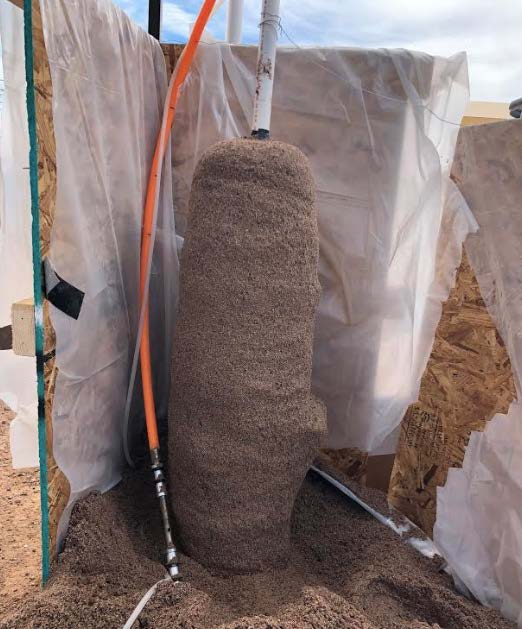Inspired by Nature, ERC Develops Process for Creating Biocemented Columns From Sand
Outcome/Accomplishment
The Center for Bio-mediated and Bio-inspired Geotechnics (CBBG), an NSF-funded Engineering Research Center (ERC) headquartered at Arizona State University, developed a process to create columns of biocemented sand for use as foundation and excavation support. The technology shows promise for the use of biocement as a sustainable construction material.
Impact/Benefits
The enzyme-induced carbonate precipitation (EICP) process, developed and patented by the Center, can potentially reduce the costs and environmental impact associated with the manufacture of Portland cement. The process is at the forefront of a new generation of engineering processes and solutions inspired by nature to transform design and construction.
Explanation/Background
Portland cement is the most commonly used material in traditional foundation reinforcement, but its production requires large amounts of energy and releases sizable quantities of carbon dioxide into the environment. The EICP process developed by CBBG researchers shows promise as a low-cost method for creating biocement, a more environmentally-friendly construction material.
EICP relies on the urease enzyme, which the NSF-funded team extracted from jack beans, to break down urea and release carbonate ions that help cement soil. A solution made from the extracted enzyme was injected into boxes of clean sand using a sleeve pipe. The resulting biocemented columns met strength expectations for use in construction.
Location
Tempe, ArizonaStart Year
Energy and Sustainability
Energy, Sustainability, and Infrastructure
Lead Institution
Core Partners
Fact Sheet
Outcome/Accomplishment
The Center for Bio-mediated and Bio-inspired Geotechnics (CBBG), an NSF-funded Engineering Research Center (ERC) headquartered at Arizona State University, developed a process to create columns of biocemented sand for use as foundation and excavation support. The technology shows promise for the use of biocement as a sustainable construction material.
Location
Tempe, ArizonaStart Year
Energy and Sustainability
Energy, Sustainability, and Infrastructure
Lead Institution
Core Partners
Fact Sheet
Impact/benefits
The enzyme-induced carbonate precipitation (EICP) process, developed and patented by the Center, can potentially reduce the costs and environmental impact associated with the manufacture of Portland cement. The process is at the forefront of a new generation of engineering processes and solutions inspired by nature to transform design and construction.
Explanation/Background
Portland cement is the most commonly used material in traditional foundation reinforcement, but its production requires large amounts of energy and releases sizable quantities of carbon dioxide into the environment. The EICP process developed by CBBG researchers shows promise as a low-cost method for creating biocement, a more environmentally-friendly construction material.
EICP relies on the urease enzyme, which the NSF-funded team extracted from jack beans, to break down urea and release carbonate ions that help cement soil. A solution made from the extracted enzyme was injected into boxes of clean sand using a sleeve pipe. The resulting biocemented columns met strength expectations for use in construction.

